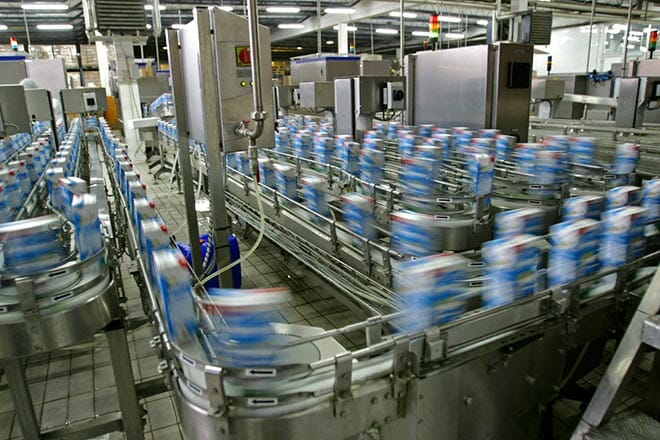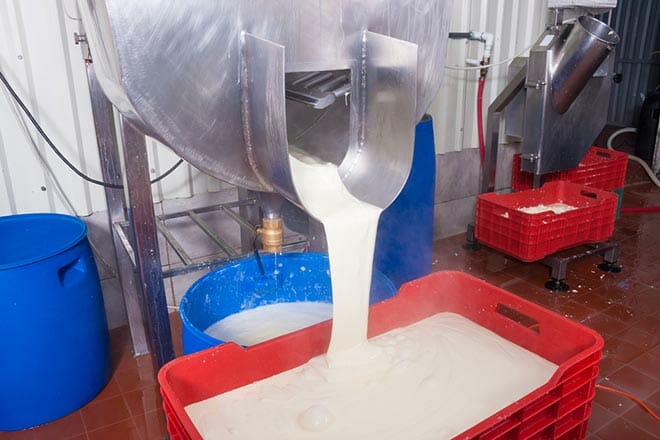June is National Dairy Month and in consideration of all things dairy, here are some interesting facts about milk, cheese, yogurt and ice cream that demonstrate just how important sanitary strainers are in their production. Used to remove impurities and reduce the size of fat globules, sanitary strainers play a critical role in improving and maintaining product quality across the dairy industry. These numbers alone highlight the need for strainers.

Milk
- Approximately 212 billion pounds of milk, or nearly 26.5 billion gallons, were produced during 2016
- During the same year, total retail milk sales equaled 49.14 billion pounds – or approximately 6 billion gallons
- Sales of refrigerated skim or low-fat milk amounted to $5.46 billion for the 52 weeks ending May 15, 2016
Cheese
- Nearly 11.45 billion pounds of cheese were produced in 2014
- Retail sales of natural cheese amounted to approximately $14.92 billion in 2015, with processed cheese adding another $2.44 billion
- The per capita consumption of all cheeses amounted to about 33.92 pounds in 2014
Yogurt
- Yogurt sales totaled $7.7 billion in 2015, increasing from $6.2 billion in 2010
- The per capita consumption of all yogurts totaled nearly 27.4 half pints in 2014
Ice Cream
- Ice cream companies produced more than 872 million gallons of ice cream in 2014
- The average American consumes almost 22 pounds of ice cream annually
- Premium ice cream, which typically has a higher fat content than regular ice cream, is the most popular with consumers
Note the key phrase in the last bullet point, “higher fat content.” Since milk is a primary ingredient in cheese, many yogurts and ice cream, we will examine how it is processed. This is where sanitary strainers play an important production role.
Part of this milk is not like the other
After arriving at a processing plant, milk goes through several steps:
- Standardization – This separates skimmed milk from the cream. Once separated, they can then be rejoined at different fat percentage levels to create various milk products
- Pasteurization – After standardization, the milk is quickly heated to kill any potential disease-causing bacteria
- Homogenization – Lastly, the milk fat is broken into smaller particles to prevent separation
Homogenization is usually achieved by pumping milk through the small openings of sanitary strainers under very high pressure – anywhere between 2,000 to 3,000 psi. This requires strainers of rugged construction that can withstand high flow rates and accommodate a wide range of product viscosities. The result is milk or milk products with fat globules reduced in size anywhere between 0.2 to 2 microns so that no visible cream separation occurs, and looks and tastes creamier.

In Summary
To review a few key points about the need for and use of strainers in the dairy industry:
- Billions of gallons of dairy products are processed each year in the United States. All of them must meet stringent hygiene and quality standards
- Dairy processing plants depend on sanitary strainers to safely produce milk, cheese, yogurt, ice cream
- Dairy products can present strainer and filter challenges depending on their flow rate through the system and their tendency to congeal
- Sanitary strainers come in many shapes and sizes, and are customizable depending on a variety of factors including application, size of production line, size of particulates requiring removal, flow rate and temperature
SaniClean Strainers, a Newark Wire brand, manufactures a full line of 3A certified sanitary strainers, assemblies, replacement parts, and filter media suitable for a wide range of applications and capacities, including the dairy industry. SaniClean Strainers are ruggedly built to withstand the most demanding production cycles. They are easy to clean and integrate into new or existing piping configurations. Contact them today for your next filtration project.
